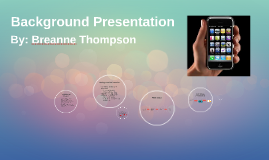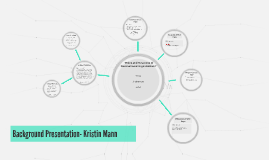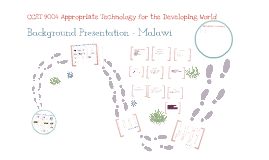Ocean Acidification Background
Transcript: By: McKenzie Bruno Ocean Acidification Background How do humans on earth produce CO2? 1 Humans and animals naturally produce CO2 through respiration. Cells in plants and animals release CO2 and H2O in the process of breaking down nutrients and O2. According to the U.K. Department for Environment, Food & Rural Affairs, "this accounts for 28.56% of natural emissions" (Denmen) or 220 billion tonnes of CO2 emissions each year . 2 How and Why is CO2 absorbed into our oceans? The oceans absorb around 25% of carbon emissions produced by humans burning fossil fuels (Stoller-Conrad). There are many factors that can effect how much CO2 the ocean absorbs, these are: temperature, salinity and depth. Cold water holds more gas, less salty water holds more gas and deep/high pressure water can hold more gas. What changes do the oceans undergo because they absorb excess amounts of CO2? 3 The ocean is now 25% more acidic than it was prior to the Industrial Revolution. This increased acidity is due to carbon reacting with the ocean and it's elements. "Le Chatelier’s principle applied to reaction shows that increasing CO2 favors the forward reaction, increasing the HCO3– and H+ concentrations" (NA). Le Chatelier's principle also shows a reverse reaction which is decreacing CaCO3. What effect does CO2 have on our ocean? 4 Carbonic acid is formed when CO2 is dissolved into the ocean therefore increasing oceans pH. The ocean's increased acidity causes mussels, sea urchins, and crabs start to dissolve their protective shells to counter the elevated acidity (EPA). This chain reaction is killing lots of marine life and in turn destroying the food chain. What is the Carbon Cycle? 5 "Carbon flows between each reservoir in an exchange called the carbon cycle, which has slow and fast components" (Riebeek). There are two sides of the carbon cycle, the fast and slow cycle. The slow cycle latsa around 100-200 million years and is movement between rock, soil, ocean and atmosphere. While the fast cycle isn't necessarily what we consider to be fast, it is much faster than the slow cycle in that it only takes about one lifespan to complete. How does the addition of CO2 disrupt the ocean's equilibrium? 6 The addition of CO2 is necessary in the ocean however too much carbon being added is now the problem earth is facing. In the past, the ocean has been able to balance out the elements in this equation: CO2 + H2O <> H2CO3 <> H+ + HCO3– <> 2 H+ + CO32– (Gutowska). However, now that there is even more CO2 being absorbed by the ocean the equilibrium that was held before is now unsustainable hence the fatal decrease in pH. The purpose of the lab is to help the students understand ocean acidification and it's effects on the oceans and marine life. Purpose Brewer, P. G. (2008, September 01). Rising Acidity in the Ocean: The Other CO 2 Problem. Retrieved May 28, 2018, from https://www.scientificamerican.com/article/rising-acidity-in-the-ocean/ Effects of Ocean and Coastal Acidification on Marine Life. (2016, December 21). Retrieved May 28, 2018, from https://www.epa.gov/ocean-acidification/effects-ocean-and-coastal-acidification-marine-life Gutowska. (2016). When carbonate formation loses equilibrium « World Ocean Review. Retrieved May 28, 2018, from https://worldoceanreview.com/en/wor-1/ocean-chemistry/acidification/when-carbonate-formation-loses-equilibrium/ Jensen, C. (2017, April 27). Ocean Acidification. Retrieved May 28, 2018, from https://www.nationalgeographic.com/environment/oceans/critical-issues-ocean-acidification/ Main sources of carbon dioxide emissions. (2017, July 08). Retrieved May 28, 2018, from https://whatsyourimpact.org/greenhouse-gases/carbon-dioxide-emissions#footnoteref4_7o0klo6 Ocean Chemistry. (2015, November 24). Retrieved May 28, 2018, from https://www.acs.org/content/acs/en/climatescience/oceansicerocks/oceanchemistry.html Ocean dissolved gases. (2010, June 22). Retrieved May 28, 2018, from https://www.sciencelearn.org.nz/resources/688-ocean-dissolved-gases Riebeek, H. (2008, June 30). The Ocean's Carbon Balance : Feature Articles. Retrieved May 28, 2018, from https://earthobservatory.nasa.gov/Features/OceanCarbon/ Work Cited

















